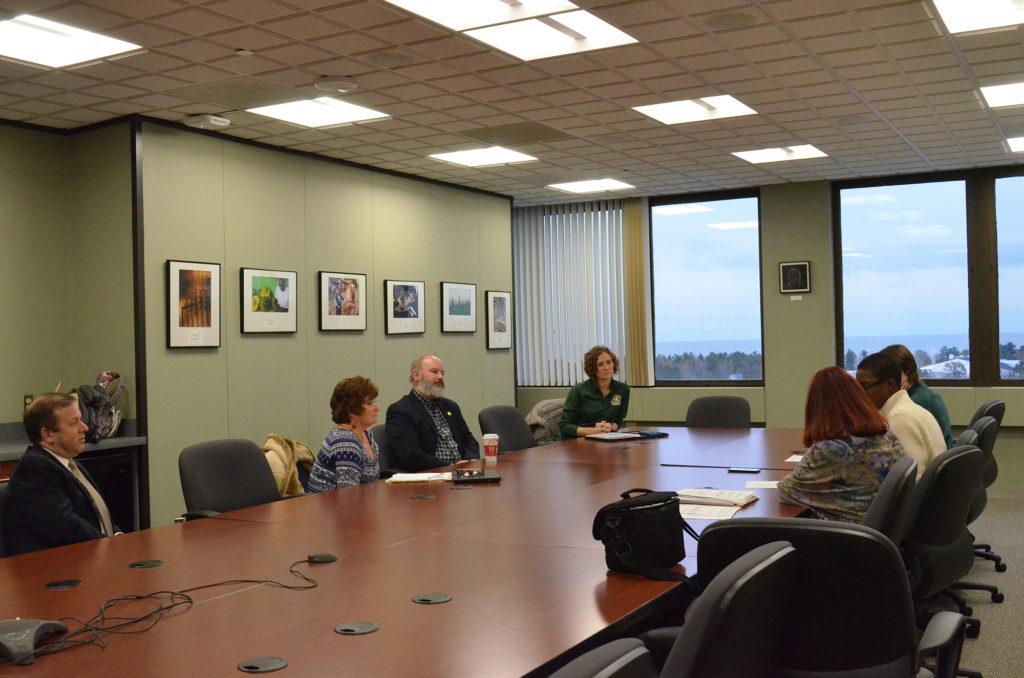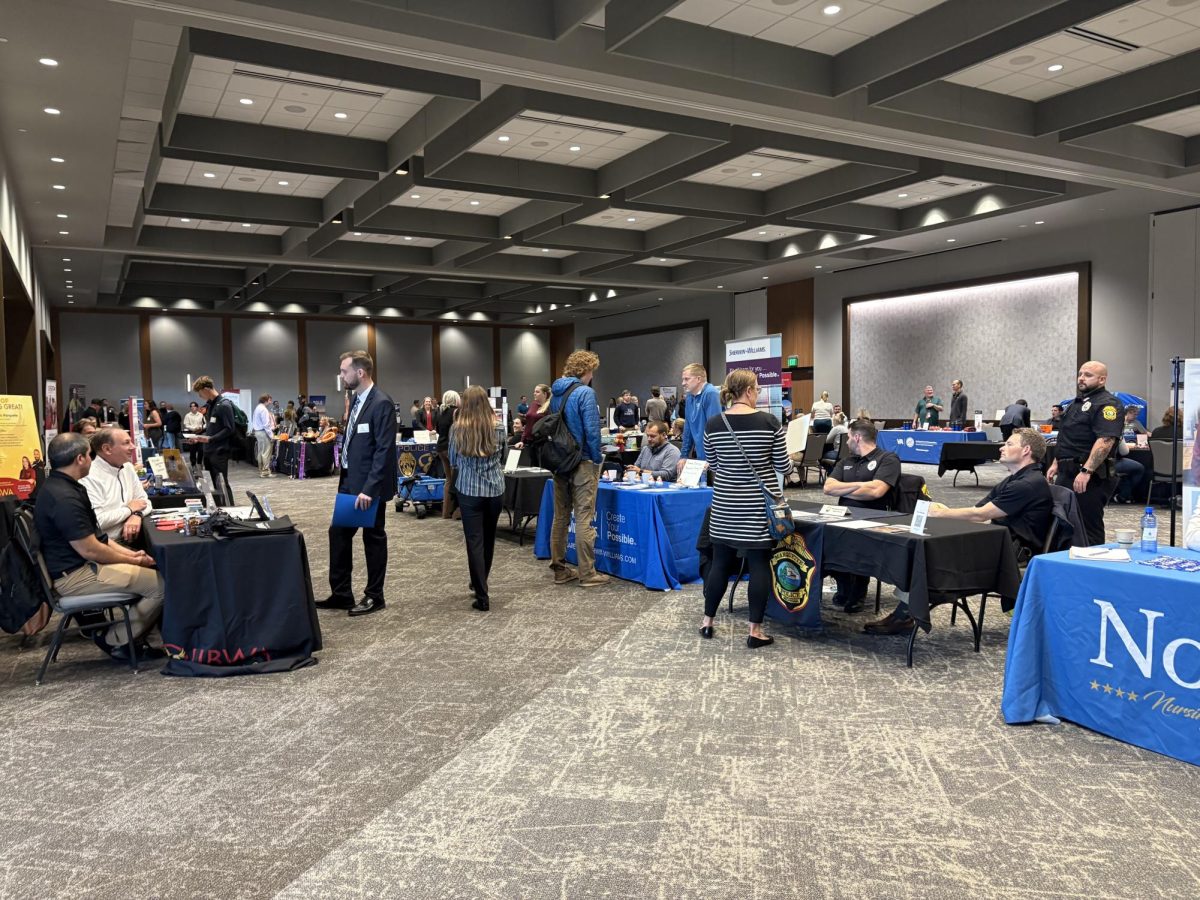NMU first began a strategic resource allocation (SRA) process in 2016. Since then, with the guidance of Larry Goldstein—a consultant from Campus Strategies LLC—two task forces have been charged with assessing all facets of the university.
The Academic Task Force is responsible for reviewing all academic programs that generate student credit hours, whereas the Support Task Force will review programs that cost money but do not produce credits. The groups were created to evaluate how all academic and non- academic programs contribute to the university’s overall success. They will help determine if additional investments can be made in those that are, or if a reallocation of resources would be required for those that aren’t.
Now, the academic working group is in the fourth phase of the SRA process. This involves data gathering and assessment of university programs. The support group is in the fifth phase of SRA, which involves the preparation of reports. There are eight phases in the priority actions sequence of the SRA process.
Both task forces recently created templates containing report writing prompts that all members from both groups will fill out to assess the value or demand of programs to the university. The prompts were created to gather data on multiple criteria from both academic and support programs.
“What we tried to do is come up with different criteria that enabled those particular programs to tell their story,” said Carol Johnson, an instructor in the College of Business and co-chair of the Academic Task Force. “So we looked at things like internal demand… We also looked at the history [of programs].”
The Academic Task Force has 10 different criteria and the Support Task Force has six different criteria for reviewing programs. There are 357 reported academic programs and 250 reported support programs under review.
“We broke down each of the criteria into a series of questions but, overall, each criteria has a certain weight and they’re not equal,” said David Wood, a professor of English and second co-chair of the Academic Task Force. “But it does allow us— within the parameters of the template itself—to permit each program to tell its story and to paint itself in the best possible light while allowing us to have some sort of ability to weigh one program against another.”
The templates for the Support Task Force have been tested and are already out for use for reporting on support programs. Meanwhile, templates for the Academic Task Force have also been tested, and a two- hour training session was held Wednesday, Nov. 15 for all deans and department heads to clear up any confusion about how to fill them out correctly. Next, the Academic Task Force will send out the templates for report.
“From the faculty perspective, to assess the relative worth and merits of each one of these programs on their own terms, is a huge bonus and it’s a huge selling point for what Northern is and what Northern represents rather than just having the upper administration impose those things from on high,” Wood said.
The weighting of the criteria is different for both task forces and is used so programs can be evaluated through a calculated point system.
“It’s just a guideline for those on our task force when they have to read the responses. We wanted to make it known that their over-
all essentiality to the university is more important than their cost effectiveness, so that’s weighted a little bit more,” said Tricia Bush, co-chair of the Support Task Force and associate director of intercollegiate athletics and recreational sports.
The reports in the templates were created using qualitative and quantitative information of academic and support programs from data results generated by a Qualtrics survey. The templates have been shared for data-gathering purposes among each of the 20 members elected to both of the task forces.
“It’s a voting process. So the 20 people come into the room and they have a vote between what programs will go into the one to five quintiles,” Bush said. “Right now, we’re reviewing 13 every meeting. They come with their 13 programs and each one they’ll assign one through five on where they think it should fall.”
Every member of both task forces is responsible for looking at every program independently. After reviewing the information, they make their own assessment as to where they think a program belongs within the five quintiles.
Each individual program requires at least 16 out of 20 votes to be placed into a quintile. Votes will not be made public.
“The Academic Task Force will produce a report at the end of our process and the Support Task Force will also prepare their own separate report. At that point, those reports will be forwarded directly to the Office of Academic Affairs,” Wood said.
“Then it becomes the responsibility of Academic Affairs as well as the continued faculty voice of the [Educational Planning Committee], which will also allow more input from the union.”
The generated reports will also be made available to the campus community once they’ve been submitted to Academic Affairs, Wood said.
The SRA process is co-chaired by Kerri Schuiling, provost and vice president for Academic Affairs and Gavin Leach, vice president for finance and administration. The two meet biweekly with members from both task forces. More information about the SRA process and distinction can be found at www.nmu.edu/sra/.
NMU spent $40,000 for consultation from Larry Goldstein for the entirety of the SRA process. The process is meant to last over the course of a year from its start date in February. It will conclude with the submission of a report of recommendations to NMU President Fritz Erickson that is projected to be sent out in March.
All programs being reviewed are from a snapshot year starting from the summer semester of 2015. If a program is placed into the fifth quintile or being considered for phase-out, department heads can go back and show how that program has improved since then, Schuiling explained.
“It’s important to note that all contracts will be honored,” Schuiling said.
She explained, students who might be in a program that could possibly be phased out will be matriculated until they graduate.
Incoming students will have the option to go into a program related to their desired field of study if a program is no longer offered after the SRA process.





























